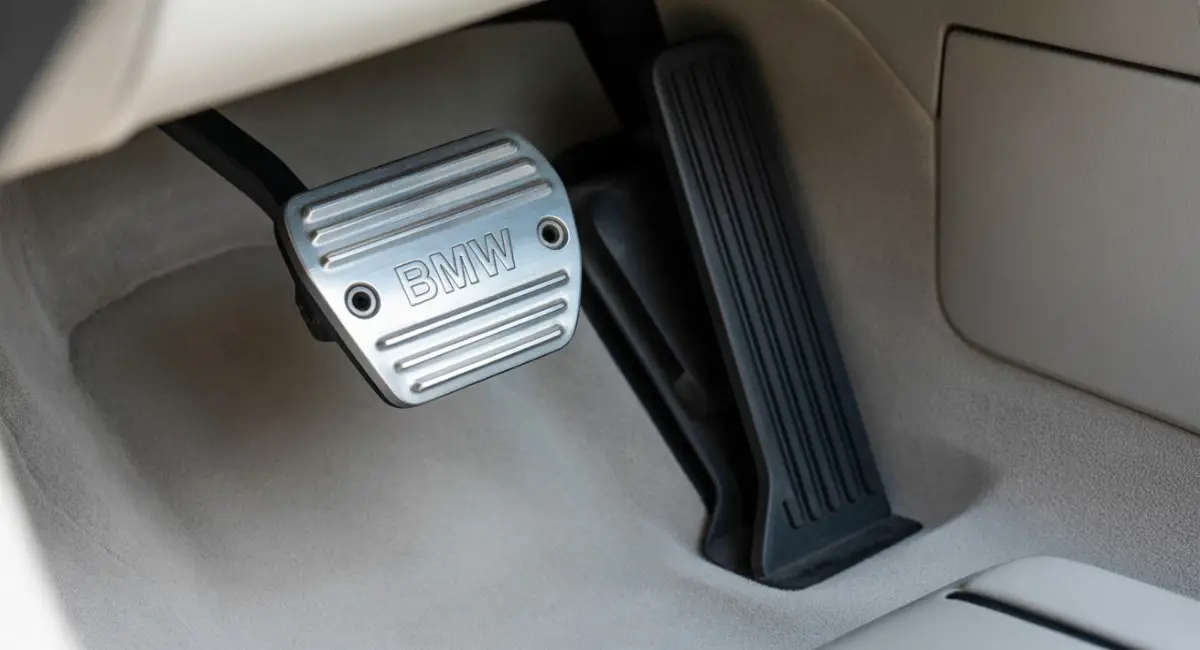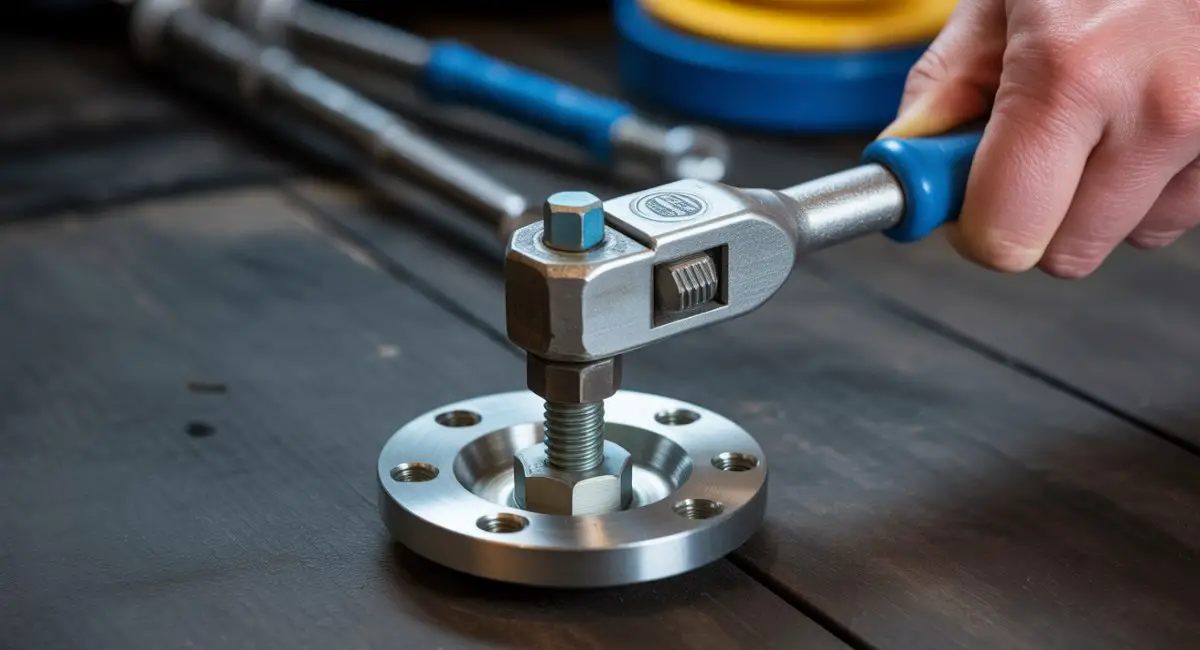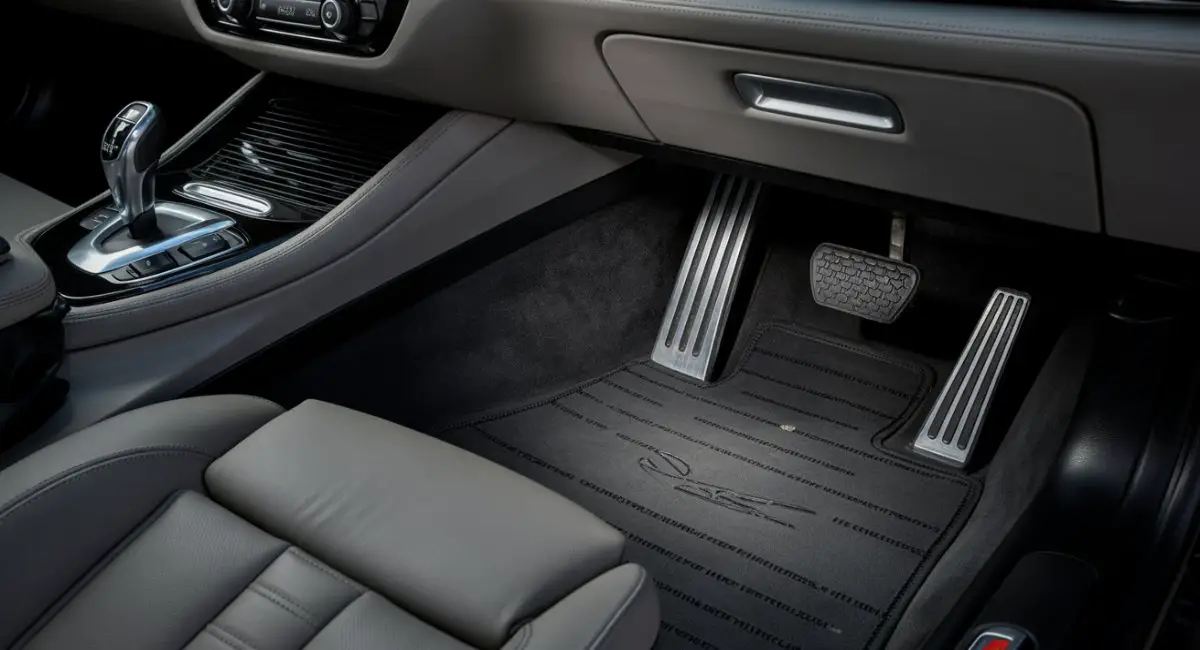The accelerator pedal in your BMW is more than just a footrest—it’s the key to controlling your vehicle’s speed and unleashing its performance. But have you ever wondered how this critical component stays securely in place? That’s where the adaptor plate comes in. This often-overlooked part ensures the accelerator pedal is firmly mounted to your car’s structure, delivering a smooth and responsive driving experience. Knowing how the BMW accelerator attaches to the adaptor plate can help you troubleshoot issues, perform maintenance, or even customize your ride.
In this detailed guide, we’ll explore the role of the adaptor plate, the attachment methods used in BMW vehicles, the tools you’ll need, and common problems you might encounter—along with how to fix them. Whether you’re a BMW enthusiast or a DIY mechanic, this article will give you the insights you need. Let’s dive in!
Understanding the Adaptor Plate in BMW Vehicles
The adaptor plate serves as a sturdy foundation for the accelerator pedal, anchoring it to the car’s floor or firewall. In BMWs, this component is typically a metal or reinforced plastic bracket designed to withstand constant pressure and movement. Its primary job? To keep the pedal stable while transmitting your input to the throttle system—whether it’s a traditional cable setup or a modern electronic drive-by-wire system.
BMW models vary in their design, so the adaptor plate can differ depending on the year and series. For instance, older models like the E36 3 Series might use a simpler plate bolted directly to the floor, while newer ones like the F30 or G20 incorporate more complex assemblies to support electronic sensors. Regardless of the model, the adaptor plate ensures proper alignment and durability, which are hallmarks of BMW engineering.
What makes BMW’s approach unique? Precision. The adaptor plate is often tailored to fit specific pedal designs, ensuring minimal play and maximum responsiveness. Some plates even include mounting points for sensors or wiring harnesses in electronic systems, blending mechanical stability with cutting-edge tech.

How Does the BMW Accelerator Attach to the Adaptor Plate?
The way the accelerator pedal connects to the adaptor plate in a BMW depends on the model and its throttle system. Here are the most common attachment methods, complete with step-by-step breakdowns:
Bolting
Bolting is a tried-and-true method, especially in older BMWs or models with mechanical throttle systems.
- Step 1: Position the Pedal
Align the accelerator pedal’s base with the holes on the adaptor plate. Check that it sits flush to avoid wobble. - Step 2: Insert Bolts
Use high-strength bolts (typically M6 or M8, depending on the model) to secure the pedal through pre-drilled holes. - Step 3: Tighten Securely
Hand-tighten first, then use a torque wrench to apply the manufacturer-specified torque—often around 10-15 Nm for BMW pedals. - Step 4: Test Stability
Press the pedal lightly to ensure it’s firm and doesn’t shift.
Safety Tip: Double-check bolt tightness after a few drives, as vibrations can loosen them over time.
Screwing
Some BMWs use screws for a quicker, less permanent attachment, common in electronic pedal setups.
- Step 1: Align the Components
Match the pedal’s mounting points with the adaptor plate’s threaded holes. - Step 2: Drive Screws In
Use a screwdriver (usually Phillips or Torx) to fasten self-tapping screws into place. - Step 3: Avoid Over-Tightening
Stop when the screw head is flush—overdoing it can strip the threads or crack the plate. - Step 4: Verify Fitment
Ensure the pedal pivots smoothly without excess resistance.
Note: Screws are often paired with lock washers to prevent loosening.
Clipping
Newer BMW models, especially those with modular designs, may use clips or snap-fit mechanisms.
- Step 1: Prep the Clips
Inspect the pedal for integrated plastic clips or metal retainers. - Step 2: Snap into Place
Press the pedal firmly onto the adaptor plate until you hear a click, indicating the clips have engaged. - Step 3: Check Security
Tug gently to confirm the pedal won’t pop off under pressure. - Step 4: Inspect Regularly
Clips can wear out, so look for signs of looseness during routine checks.
Pro Tip: If clips feel weak, a small dab of adhesive (approved for automotive use) can reinforce the connection without compromising removal later.
Each method reflects BMW’s balance of reliability and ease of maintenance. Bolting offers rugged durability, screwing provides flexibility, and clipping speeds up assembly in modern production lines.
Tools and Techniques for a Secure Attachment
Attaching the BMW accelerator to the adaptor plate requires the right tools and a few smart techniques. Here’s what you’ll need:
Essential Tools
- Torque Wrench: Ensures bolts or screws are tightened to BMW’s exact specs (e.g., 10-15 Nm).
- Screwdriver Set: Phillips or Torx heads match most BMW fasteners.
- Socket Set: For bolts, typically 10mm or 13mm sockets work best.
- Pliers: Handy for clipping mechanisms or removing stubborn retainers.
- Cleaner and Rag: Wipe down surfaces to prevent debris from interfering with the fit.
Techniques for Success
- Alignment Matters: Before fastening, double-check that the pedal and plate line up perfectly. Misalignment can lead to uneven wear or poor throttle response.
- Torque It Right: Stick to BMW’s torque settings—too loose risks detachment, too tight can damage threads or components.
- Clean First: Dust or grime on the adaptor plate can weaken the connection. A quick wipe-down makes a difference.
- Test After Installation: Push the pedal through its full range to confirm smooth operation and no binding.
Using these tools and tricks ensures the accelerator stays where it belongs, keeping your BMW responsive and safe.

Troubleshooting Common Issues with the Accelerator and Adaptor Plate
Even with BMW’s top-notch engineering, problems can pop up. Here are the most common issues, along with how to tackle them:
Loose Attachment
- Symptoms: Pedal wiggles, inconsistent throttle response.
- Fix: Tighten bolts or screws to spec using a torque wrench. For clips, replace worn ones with OEM parts.
- Prevention: Check fasteners every 6 months or after rough driving.
Worn Components
- Symptoms: Pedal feels spongy or sticks slightly.
- Fix: Inspect the adaptor plate and pedal base for cracks or wear. Replace damaged parts with BMW-approved replacements.
- DIY Tip: A small amount of lubricant (like silicone spray) on pivot points can help, but avoid overdoing it.
Electrical Glitches (Drive-by-Wire Systems)
- Symptoms: Delayed throttle response, warning lights on the dash.
- Fix: Check the wiring harness connected to the adaptor plate. Use a multimeter to test sensor continuity. If faulty, replace the sensor or consult a pro.
- When to Get Help: Complex electrical issues often need a BMW diagnostic tool (like ISTA) and a mechanic’s expertise.
Misalignment
- Symptoms: Pedal travel feels off or uneven.
- Fix: Loosen the attachment, realign the pedal with the plate, and retighten carefully.
- Pro Tip: Mark the original position with a pencil before adjusting to save time.
Most of these fixes are straightforward with basic tools, but if you’re unsure—especially with electronic systems—don’t hesitate to visit a certified BMW technician.
Why It Matters: The Bigger Picture
Understanding how the BMW accelerator attaches to the adaptor plate isn’t just trivia for car buffs. A secure connection ensures your throttle inputs translate instantly to the engine, maintaining that signature BMW driving feel. A loose or faulty setup? That could mean sluggish performance or even safety risks. Plus, knowing the ins and outs can save you money on repairs and give you confidence behind the wheel.
BMW designs these components with precision, but wear and tear—or even aftermarket mods—can throw things off. By mastering this process, you’re equipped to keep your car in top shape, whether it’s a classic E46 or a sleek M4.

Tips for BMW Owners and Enthusiasts
- Regular Checks: Spend 5 minutes every few months inspecting the pedal and plate for looseness or wear.
- Use OEM Parts: Aftermarket adaptor plates or pedals might not fit as precisely, risking performance.
- Document Your Work: Snap photos during maintenance to track changes or share with forums like BimmerFest.
- Upgrade Smartly: If swapping to a performance pedal, ensure the adaptor plate matches the new design.
Wrapping Up
The question “how does the BMW accelerator attach to the adaptor plate” opens the door to appreciating the engineering behind your car’s responsiveness. From bolting to clipping, each method has its place in BMW’s lineup, supported by the right tools and know-how. Now that you’ve got the full scoop—attachment methods, tools, troubleshooting, and more—you’re ready to tackle this part of your BMW with confidence.
Got a loose pedal or planning a pedal swap? Grab your tools and give it a go. Your BMW deserves it, and so does your driving experience!
